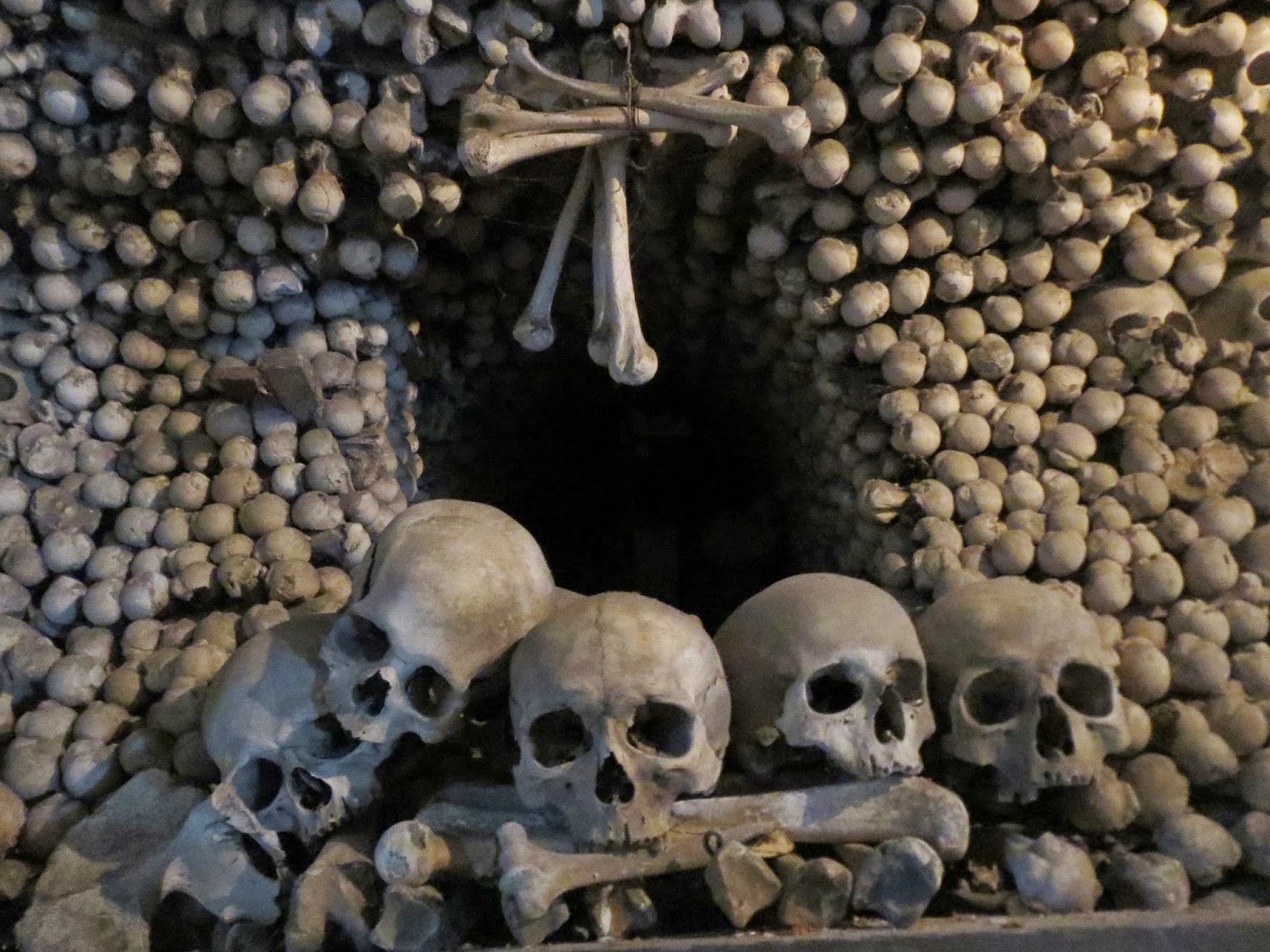Prague's such a lovely city that we decided to only plan one trip out of town and that was to Kutna Hora, a town of 20,000 40 miles east of Prague Europe ’s
largest silver mine. Much of Europe ’s coinage was minted here but by 1700 the mining and
minting petered out and the city went into decline. As Rick Steves says, Kutna
Hora is a typical Czech town and about as close to quintessential Czech life as
you can get.
We had really come to see the eerieBone Church
We had really come to see the eerie
The Cemetery Church Bone Church
 |
| As soon as you enter this is what you see. |

 |
| A chandelier made of every human bone; so glad THAT'S not above our heads as we eat!  |
 |
| Never seen a family coat of arms quite like this one. |
We took the 1 hour train ride from the huge and very confusing Prague train station (info about which platform we needed to get to was only available 15 minutes before the train left; thank goodness we didn’t have luggage to take as we’d never have made it) to Kutna Hora’s main station and then a local train to the Sedlec station.
Sure wasn't hungry after seeing all those bones, so we then walked a mile or so into
town to see more sights after quickly peeking into the Cathedral of
Assumption of Our Lady, the 1st Cistercian monastery in Bohemia Central
Europe . Some photos below of street scenes as we walked to our next stop.
 |
| Church of St. James |
 |
| Our 1st sight of the Jesuit College on the hill on the right and St Barbara's on the left. We climbed all the way up of course. |
 |
| I'm sure you can imagine how spectacular it was walking up this long path, passing the Jesuit College on one side and jaw dropping statues on the other, on the way to St. Barbara's. |
 |
| Finally, the top of the hill and the magnificent former Jesuit College and now Modern Art Gallery. |
 |
| The front of St. Barbara's! |
 |
| and the rear. |
 |
| The Mintners' Chapel. |
 |
| The confessional. |
 |
| The detail on the base of each triangle was carved differently. |
 |
| Where the choir stood. |























That "bone" church is seriously freaky ! Always look forward to your entries-- informative & entertaining... love from Ottawa , Lina xo
ReplyDeleteLooks like the sky was finally blue and no rain. I agree that the "bone" church is freaky. Polish girl
ReplyDelete